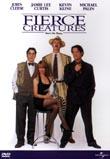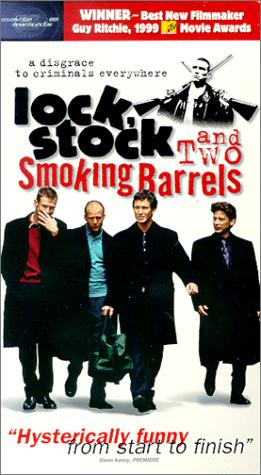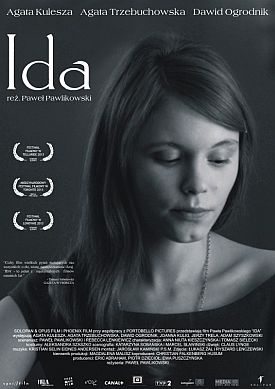Esquive, L’ or Games of Love and Chance
L’Esquive or Games of Love and Chance by the French-Arab director Abdellatif Kechiche is a sort of French West Side Story, only without music. That is, it is an attempt to translate a work of classic French literature into contemporary terms by setting it among the North African immigrants of today’s Paris. West Side Story was able to make a passable if rough and ready case for the similarities between the honor culture of Renaissance Verona as depicted in Shakespeare’s Romeo and Juliet and that of the immigrant Sharks and native Jets of 1950s Manhattan. By contrast, L’Esquive — a term which, coincidentally or not, comes from fencing and means dodging a thrust — has a lot less to work with.
The play it is not so much adapting as alluding to is The Game of Love and Chance by the 18th century playwright, Pierre Marivaux. In the original, two noble characters disguise themselves as servants, and have their servants disguise themselves as their masters, in order to escape from the formal world of the honorable classes with its careful cultivation of polite appearance and discover, as they suppose, the truth about themselves. See if you can guess what the problem is with any attempt to create an analogous scenario in a French North African housing project today. It is that the high school kids who are almost the film’s only characters live in and partake of a local version of the international popular culture in which personal authenticity is the only disguise.
In other words, for there to be a romance of disguise and revelation, there must first be a culture of honor and shame — a “judgmental” standard of behavior, as we would call it — to make something other than mere feelings worth disguising or revealing. Who these kids are is almost entirely self-defined. In terms of social class, all are equal. What, then, to make of the explanation of their teacher (Carole Franck) that “Marivaux has the poor acting rich and the rich acting poor; and no one can really manage it. It shows how we are the prisoners of our social conditions”? Insofar as that is true, the film is, without quite realizing it, a refutation of Marivaux.
To be sure, there is an attempt to introduce a political notion of class. The romance between the shy Arab boy, Krimo (Osman Elkharraz) and the vivacious French girl, Lydia (Sara Forestier) may not have much to do with Marivaux, but it is perhaps meant to suggest just a touch of the cross-cultural liaison between Tony and Maria in West Side Story. And a scene in which the police harass and rough up some of the kids is presumably meant to flatter the self-conceit of the youth culture as an oppressed class unto itself. This is also a point made by the film’s translators, who clearly had their work cut out for them, in rendering the argot of these French-speaking but mainly Arab youths into American ghetto-speak.
As with all slang, the local peculiarities and social exclusions that this implies do not translate well. As a result, it is hard for an American viewer to shake off the impression of affectation and fakery, as if these were white kids trying to “talk black” because they imagine it will make them hip. Unfair, no doubt, but there it is. If this is a disguise, it is one which everyone adopts and no one, even for a moment, thinks of throwing off. Thus, the yo’ mamma language of chillin’ and cribs and homies and the gauche courtship rituals it is used to express can have little to do with anything in Marivaux.
The kids are supposed to be rehearsing excerpts from the play for their French class, and Krimo, who is not much of an actor, wants to play the part of Arlequin in order to be close to Lydia, who is playing Lisette. Krimo’s old girlfriend Magali (Aurélie Ganito) is jealous and threatens Lydia, who can’t make up her mind how she feels. She does enjoy queening it as a “lady,” however, and wears her costume even in the street. Yet such little romantic intrigues and jealousies might be taking place in any Western European or American high school, but for the occasional interjections of Insh’Allah or references to the Holy Koran. These are almost the only indications in the film of the extent to which its Arab teenagers are caught between the international, American-influenced, Western popular culture and the traditional Islamic culture of their immigrant parents or grandparents. They mix much more easily with the host culture than the servants ever did with the masters in 18th century France.
In fact, the most interesting thing about the film is what is missing. There seems to be no tendency anywhere in these children’s lives towards what has come to be known elsewhere in the world as Islamic fundamentalism. Nowhere is there veil or head-scarf to be seen, and even the fact that women were once supposed to have been segregated and kept virginal by jealous male relatives seems to have been forgotten. It is true that the largely Moroccan and Algerian Arabs of France were pretty highly secularized before they came — though that hasn’t stopped the Pakistani Muslims of Britain from breeding a reactionary fundamentalist tendency among the young romantics who seek to emulate the glamorous outlaw, Osama bin Laden. But the movie’s attempts to create an echo of Marivaux’s tale of modesty, reticence and respect could only have been helped by a reminder that there are in the world cultures where such qualities are still prized.
Discover more from James Bowman
Subscribe to get the latest posts to your email.








